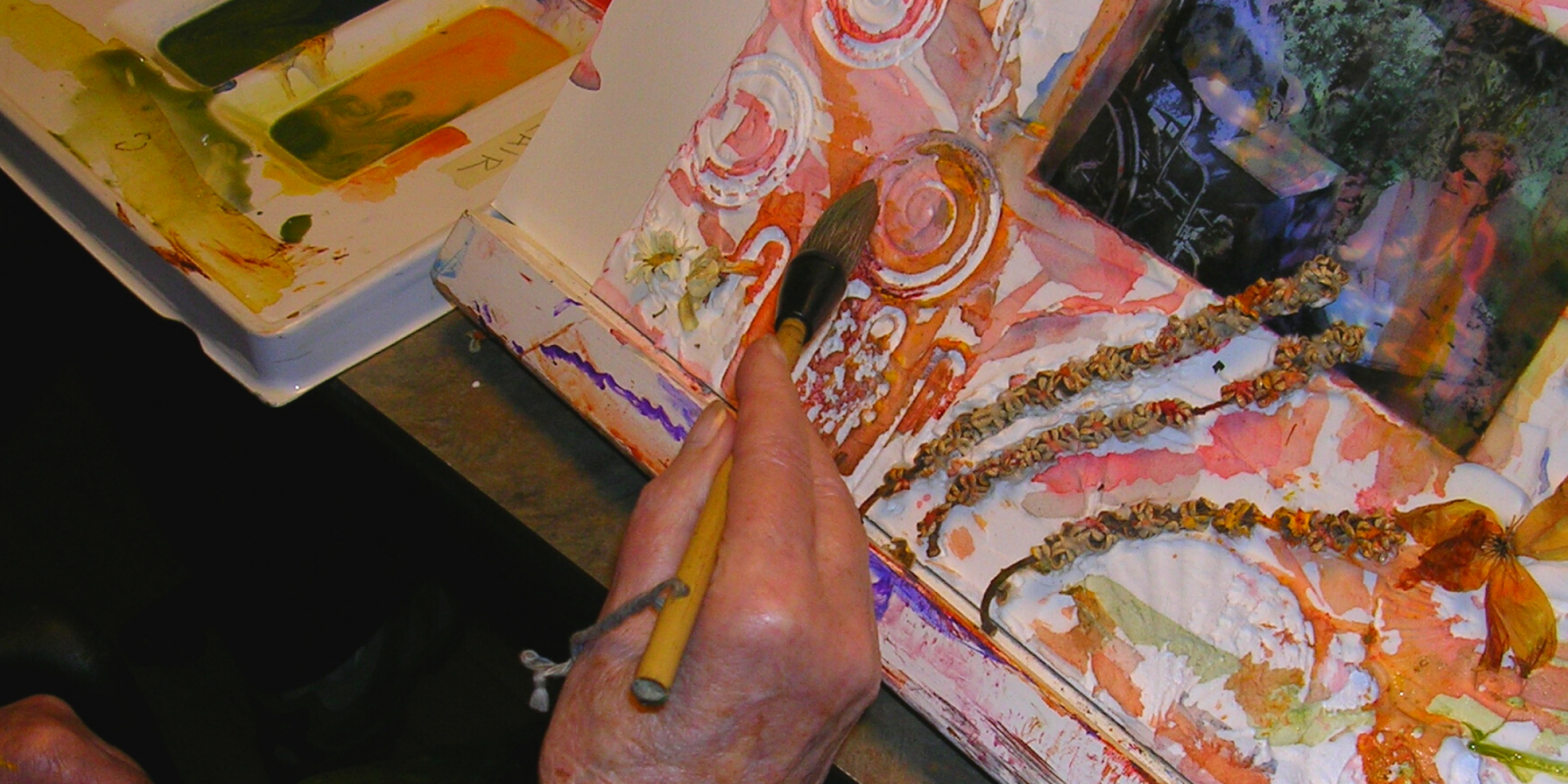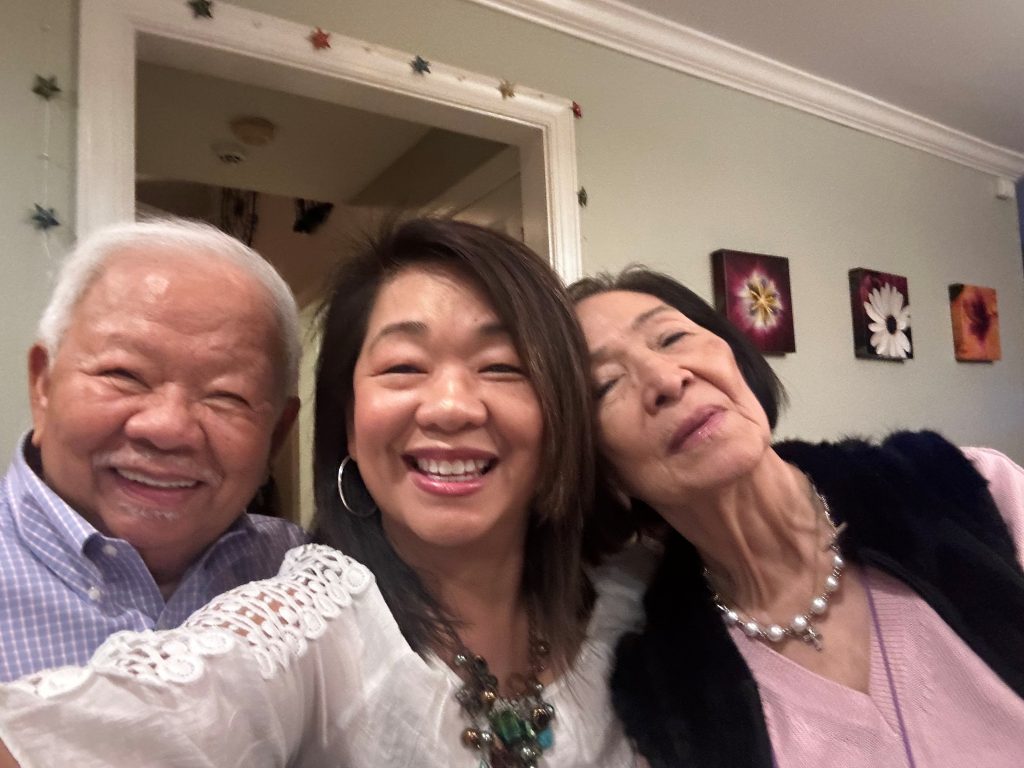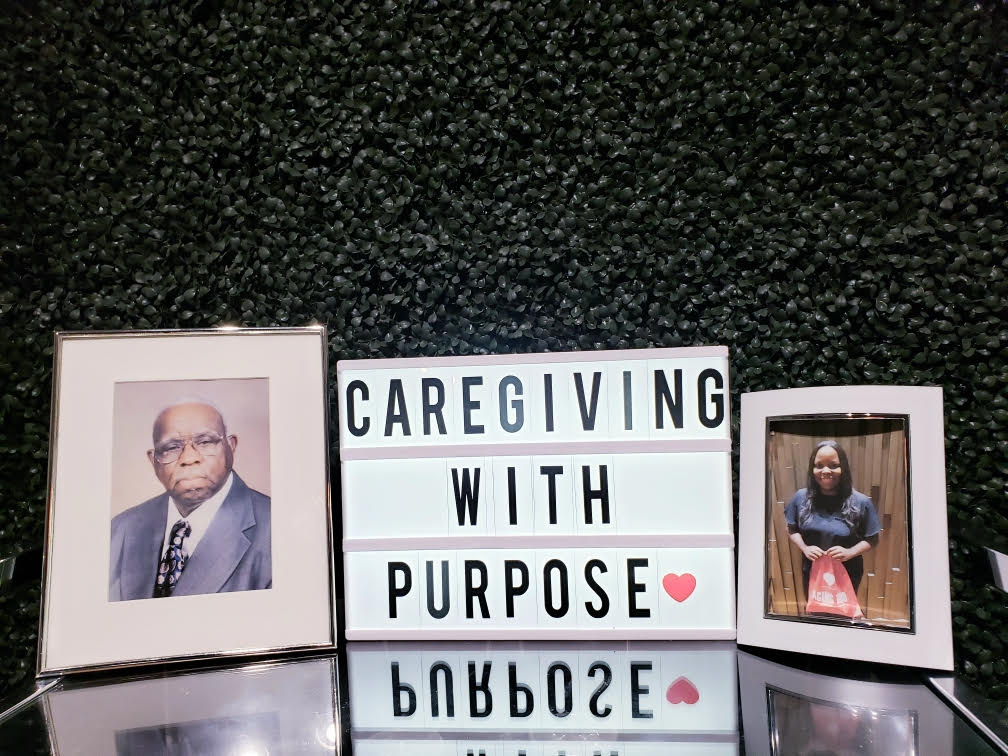Reprinted with permission from “Dementia Connections.”
Some believe dementia and creativity have nothing in common. But as I’ve seen while working with seniors living with dementia, some artistic expressions contradict this belief, and I continue to remain in wonder at our amazing brains.

Above: Sylvia’s painting of a cherry blossom tree.
Sylvia was the most interesting person with dementia I had ever interacted with. I had known her since 1999 until her death over a decade later. While facilitating my Creative Expression Activities program one day, I became intrigued when Sylvia could not complete a drawing of a small doll dressed as a clown. Yet she had produced a sophisticated interpretation of a cherry blossom, which was in full bloom in the courtyard of her care home.
Meeting and working with Sylvia changed my perception of seniors’ abilities to express themselves creatively. It was Sylvia who taught me how to hold the paintbrush for Chinese style painting, elevated the class discussion to a higher level of art critique, reminded me that photography was art too, and repeated to me how important it was to keep on painting. It was also Sylvia who asked me — after she had spent 20 minutes working on her painting that stood on an easel — if that painting was hers, while still holding the brush she had just finished dipping in paint.
Sylvia’s Earlier Years
Sylvia was born April 1924 in North Vancouver and lived and worked there nearly her entire life. She studied art at the Vancouver School of Art for four years and in London, England at the Regent Street Polytechnic School of Art for two years. Following a year of teacher’s college, she taught in schools, from elementary school to high school, before retirement. She never married and devoted her life to her mother and sister who both died of Alzheimer’s disease.
Sylvia enjoyed art throughout life and spent many summers painting in Hawaii and on Vancouver’s Gulf Islands, working with various mediums including watercolour, Chinese art, ink sketching, printmaking, videomaking and photography.
The Creative Shift
Sylvia’s earlier artwork concentrated on landscapes and images taken from nature. But as I sifted through artwork stored in her closet, on the walls of her bedroom and the work she produced in the Creative Expression Activities program, I realized her artwork had transformed as she coped with deteriorating cognition and the changing understanding of her environment.
While her artistic skills were still evident, the shift was clear:
- Realistic images turned into imaginary ones.
- Faces were distorted and features were exaggerated.
- Eyes attracted special attention and looked tormented.
- Lines became less tidy.
- Content and construction of images became simpler.
- Paintings tended to be in brighter colors.
Though these changes took place, she maintained the ability to explain her artwork and technique and continued to express a desire to keep painting up to dementia’s late stages.
Earlier Artwork:

Sylvia’s pre-dementia drawing (left) and post-dementia cat drawing (right).
The first image is an example of Sylvia’s detailed artwork before the onset of dementia. Drawn in black and white with a pencil, she paid a great deal of attention to drawing the leaves and the tree trunks.
The drawing on the right represents Sylvia’s cat she loved so much and could not bring with her when she moved into her care home. It was such a sad and traumatic situation for her.
I wondered what drove Sylvia to see some images in an eerie way. There is a saying in folklore that the eyes are the entry to the soul — are the cat’s eyes supposed to convey an emotional message, or are they the result of an enhanced creative imagination, fuelled by dementia stimulating visual perception in a specific way?


Sylvia’s clear artistic ability (top) became abstract over time (bottom).
As Dementia Progressed
The left top image here shows that Sylvia’s ability to express details had diminished in comparison to her earlier work.
However, the flow of lines and colour choices still flaunted her artistic flair.
As the dementia progressed Sylvia could no longer paint real objects, as can be seen in the bottom image to the left.
However, she still took pride and joy in being able to express herself creatively. Even her imaginary scribbles reflected her remaining artistic abilities.
Later Stages of Dementia
Finally, the below images are Sylvia’s last two works as she attempted to create drawings of a clown doll.

Sylvia’s final drawing of a clown doll.
My Emerging Understanding of Creativity and Dementia
With encouragement and appropriate environmental and emotional support, Sylvia continued to be creative and enjoyed her remaining artistic abilities despite the gradual diminishment of her cognitive and physical abilities.
To further express her inspirational spirit, I’ll offer an excerpt from a diary I kept while working with
Sylvia: Sylvia: “Isn’t it perfect? No need to draw it—I am in awe every time I look at it. Why aren’t others interested in it? I can’t understand.”
I stood there beside her, taking in the precious moment of Sylvia being so poetic, wanting to share the joy of unexpected pleasures, knowing that in a few moments she would not remember she pointed it out to me.
The most important message to come out of my work with Sylvia as an artist is that the human spirit is an amazing regenerating force. Like water in a river, our brains will seek an outlet and find ways to communicate and express.
Therefore, we need to provide opportunities and means for everyone, especially people living with dementia, to practice communication in its many forms. We need to listen to the unsaid and to what may be missing. We need to allow images, texts, stories, sounds, and the real and imaginary to coalesce into meaning. We can then better understand how visual and performing arts can be used to communicate when other ways of communicating fail.
Note: This article is based on an academic paper submitted during the doctoral studies of the author.
Dalia Gottlieb-Tanaka, MArch, PhD, is a graduate of the Bezalel Academy of Arts and Design in Jerusalem, Israel, has a Master of Architecture degree, and a PhD from the University of British Columbia in Vancouver. She founded the Society for the Arts in Dementia Care in 2005. Dalia continues to conduct research, deliver presentations and hold workshops internationally on the use of visual and performing arts in healthcare services for people living with dementia. She may be contacted at: dr.daliagt@gmail.com













